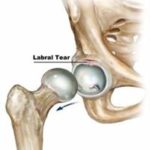What Are the Top 5 Back Care Steps You Should Follow?
We must acknowledge that your back does far more than you realise. It involves putting in extra effort even when you’re not, whether it’s carrying groceries or slouching through Zoom sessions. You are not alone, then, if you have ever moaned when you got out of bed or had that recognisable ache after lifting something amusing. However, it doesn’t have to be difficult to take care of your back. A few wise actions can make a big difference. Are you wondering what they are? Fasten your seatbelt! For a stronger, more contented spine, we’re going to go into the top 5 back care steps you should definitely follow.
Top 5 Back Care Steps That Actually Work?
If you’re scratching your head wondering where to start, don’t sweat it. Here’s a straightforward list to get your back (literally) in shape:
- Mind Your Posture
Sit, stand, or strut do it with purpose. Slouching adds pressure to your spine and muscles. Think shoulders back, chest open, and feet flat on the floor.
- Lift Like a Pro
Avoid that “uh-oh” moment by bending your knees, not your back. Keep the object close and use your leg muscles to lift. No jerking or twisting! - Stay Active, Not Stiff
A sedentary lifestyle is like a slow poison for your back. For pain free care, try walking, swimming, or yoga. Your spine loves movement, just keep it low-impact. - Sleep Smart
A bad mattress or awkward sleeping position can do serious damage. Sleep on your side with a pillow between your knees or on your back with one under them. - Stretch It Out
Gentle stretches can ease tightness and prevent stiffness. Make it a daily habit like brushing your teeth, but for your spine.
What Is the Checklist of Back Care?
Ready to keep your spine in tip-top shape? Here’s a handy back care checklist to stick on your fridge or mirror:
- Sit up straight (no hunching, please!)
- Use ergonomic furniture when possible
- Take frequent breaks if sitting long hours
- Warm up before lifting or exercising
- Wear comfortable, supportive shoes
- Maintain a healthy weight
- Stay hydrated, your discs love water!
- Avoid smoking (yep, it affects your spine too)
It’s the little habits done daily that make the big difference. Here’s the solution.
Back Care Steps Names You Should Know
There’s no official “roll call” for back care, but here are the commonly known steps (some you’ve already met):
- Postural Alignment – Keep everything stacked up like it’s meant to be
- Body Mechanics – Think of it as moving smart, not hard
- Core Strengthening – A strong core supports your back like scaffolding
- Flexibility Training – Keeps muscles long and loose
- Ergonomic Adjustment – Tailoring your environment to your spine’s needs
Memorizing these back care steps names isn’t just trivia, it’s your secret weapon against future pain.
What Is the Principle of Back Care Procedure?
Ah, now we’re talking about fundamentals. So, what is the principle of back care procedure? At its core (pun intended), it’s all about maintaining spinal alignment, reducing strain, and promoting movement. Here’s a breakdown:
- Prevention first – Back care is more about keeping issues from starting than fixing them later.
- Awareness is key – Know how your body moves and what triggers discomfort.
- Consistency over intensity – Small, consistent actions matter more than big, occasional efforts.
- Support system – Whether it’s a lumbar pillow or your abdominal muscles, your back needs backup.
- Education matters – Knowing the “why” behind each step helps you stay motivated.
The whole back care procedure rests on staying proactive and attentive to your body’s cues.
FAQs About Back Care
Q1: Can poor back care really lead to chronic issues?
Absolutely. Ignoring minor aches can lead to long-term conditions like herniated discs, sciatica, or postural deformities.
Q2: How often should I stretch my back?
At least once a day, especially if you sit for long periods. Short, frequent stretches beat occasional intense ones.
Q3: Is it okay to work out with back pain?
Light activity like walking is often recommended, but skip anything intense and consult a healthcare provider first.
Q4: Are ergonomic chairs really worth it?
Yes, big time. A good chair supports your lumbar region, promotes good posture, and reduces fatigue.
Q5: Should I see a doctor for minor back pain?
If it lasts more than a week or keeps coming back, it’s better to get it checked. Better safe than sorry, right?
Conclusion
There you have it, your straightforward manual for improving the condition of your back. These easy, achievable, and incredibly powerful back care steps will help you achieve everything from better posture to restful sleep. The objective? keeping your spine in optimal health and preventing the discomfort before it even begins. Since your back serves you well, let’s face it. Isn’t it time you gave it back?
Do you need a brief summary? Remain mindful, move wisely, and stick to the fundamentals. Your spine and future self will appreciate it.











